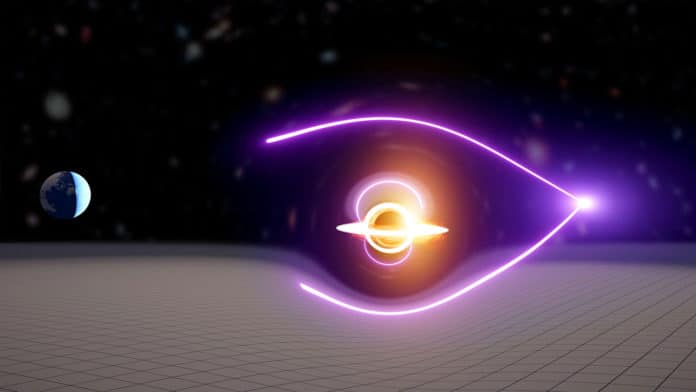Some of the brightest flashes in the Universe are believed to be produced in cataclysmic events, such as the death of massive stars or the collision of two neutron stars. Such bright flashes are known as transients.
Scientists have long studied the mysterious origin of the brightest light to get insight into the deaths and afterlives of stars and the evolution of our Universe.
In October 2014, a long-term monitoring program of the southern sky with the Chandra telescope detected such enigmatic transient. That transient, dubbed as CDF-S XT1, lasted for few thousand seconds. The energy released by the transient was comparable to the amount of energy the Sun emits over a billion years.
After the detection of CDF-S XT1, astrophysicists have come up with many hypotheses to explain this transient. However, none have been conclusive.
A recent study by a team of astrophysicists suggests- CDF-S XT1 matches predictions of radiation expected from a high-speed jet traveling close to the speed of light. Such outflows must be delivered in outrageous astrophysical conditions, for example, the disruption of a star as it gets torn apart by a massive black hole, the collapse of a massive star, or the impact of two neutron stars.
The observation suggests that the outflow from CDF-S XT1 likely originated from the two neutron stars’ merger. The event occured 450 times further away from Earth.
Such a huge distance indicates that the merger happened very early in the history of the Universe. Or, scientists noted, it may be the farthest neutron star mergers ever observed.
As the event takes place early on in the history of the Universe, this discovery advances our understanding of Earth’s chemical abundance and elements.
In 2020, astronomers detected another transient called AT2020blt. The high-speed outflows from the transient suggest that the origin must be the collapse of a massive star.
Usually, such outflows produce gamma rays. However, there is no evidence of gamma rays in observations. Missing gamma rays can be occured due to:
- The gamma-rays were not produced.
- The gamma rays were directed away from Earth.
- The gamma-rays were too weak to be seen.
Further observation of the transient AT2020blt revealed the occurrence of gamma-rays pointing towards the Earth. Although, they were too weak to be detected by the current instruments.
OzGrav postdoctoral fellow Dr. Nikhil Sarin (Monash University) said, “Together with other similar transient observations, this interpretation means that we are now starting to understand the enigmatic problem of how gamma-rays are produced in cataclysmic explosions throughout the Universe.”
“The class of bright transients collectively known as gamma-ray bursts, including CDF-S XT1, AT2020blt, and AT2021any, produce enough energy to outshine entire galaxies in just one second.”
“Despite this, the precise mechanism that produces the high-energy radiation we detect from the other side of the Universe is not known. These two studies have explored some of the most extreme gamma-ray bursts ever detected. With further research, we’ll finally be able to answer the question we’ve pondered for decades: How do gamma-ray bursts work?”
Journal Reference:
- Nikhil Sarin, Gregory Ashton et al. CDF-S XT1: The off-axis afterglow of a neutron star merger at z=2.23. arXiv: 2105.10108
